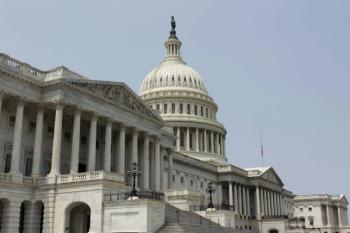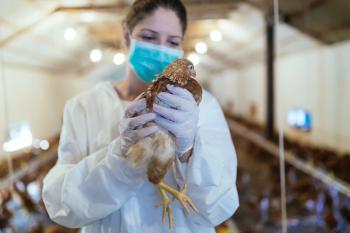
Herd Immunity Again Addressed in Great Barrington Declaration
A recently proposed effort toward herd immunity through younger person COVID-19 infection was met with contention from public health leaders and experts.
Debate surrounding the concept of herd immunity has again risen during the
The declaration, from a trio of infectious disease epidemiologists, advocates for the barring of pandemic-response lockdown policies and resumption of in-person professional and recreational activities for younger, low-risk persons.
“As immunity builds in the population, the risk of infection to all—including the vulnerable – falls,” the declaration read. “We know that all populations will eventually reach herd immunity—i.e. the point at which the rate of new infections is stable—and that this can be assisted by (but is not dependent upon) a vaccine."
As such, the signees stressed society’s goal should be to “minimize mortality and social harm until we reach herd immunity.”
The declaration’s authors include:
- Martin Kulldorff, PhD, Professor of Medicine at Harvard Medical School & Brigham and Women’s Hospital
- Prof. Sunetra Gupta, Professor of Theoretical Epidemiology at University of Oxford
- Jay Bhattacharya, MD, PhD, Professor of Medicine at Stanford University
The declaration was co-signed by a few dozen other US- and international-based investigators and clinicians.
In their criticism of lockdown policies, Kulldorff and colleagues pointed to observed detriments of overall health in populations since the pandemic began: fewer childhood vaccination rates, rises in cardiovascular disease mortality, fewer cancer screenings, and instances of worse overall mental health while COVID-19 has limited in-person healthcare capability.
“Keeping these measures in place until a vaccine is available will cause irreparable damage, with the underprivileged disproportionately harmed,” they wrote.
Their proposed practice, called “Focused Protection,” would call for low mortality-risk persons to resume normal lives, building up immunity to COVID-19 through natural infection, while those at greater mortality risk remain protected.
“By way of example, nursing homes should use staff with acquired immunity and perform frequent PCR testing of other staff and all visitors,” they wrote. “Staff rotation should be minimized. Retired people living at home should have groceries and other essentials delivered to their home. When possible, they should meet family members outside rather than inside.
The authors wrote that old, infirm patients with COVID-19 face a “more than a thousand-fold” mortality risk than young patients, and that the pandemic virus is less dangerous than the influenza to children.
In an interview with Contagion® this August, Kulldorff explained that it had become clear since the beginning of the pandemic that mortality risk due to COVID-19 greatly differed by age.
“What’s surprising is that there was a generally universal lockdown on everybody,” Kulldorff said. “And what would make sense from a public health perspective, to minimize mortality, is to protect the elderly better than what was done, while letting younger people live their lives, and eventually build up herd immunity that eventually protects the older people, also.”
Kulldorff acknowledged the best of the 2 ways to acquire herd immunity in a population is through a vaccine. Because no vaccine is currently available, his advocacy for a natural infection process that could potentially harbor herd immunity includes the stipulation that high mortality-risk patients remain protected through isolation practices in the meantime.
“That leads to a strategy where we don’t lock down the whole society across the board with all age groups, but we make sure the elderly are properly protected—that they don’t have to go to the supermarket…that they don’t go to restaurants, that they don’t participate in large gatherings, that the person working in nursing homes are either immune or they are tested regularly,” he said.
Public health expert reception to Kulldorff and colleagues’ proposal was mixed—as has generally been the field’s attitude toward the concept of COVID-19 herd immunity since the beginning of the pandemic.
World Health Organization (WHO) Director General Tedros Adhanom, PhD,
“Allowing a dangerous virus that we don’t fully understand to run free is simply unethical,” Adhanom said. “It’s not an option.”
In writing for the Contagion®
"While this can be achieved by immunity acquired by natural infection, as may be the case with Zika virus, the cost in lives is often too high and natural infections may not induce lifelong immunity," Rasmussen wrote. "Therefore, the development of vaccines and mass vaccination programs are the gold standard for inducing herd immunity in the global population."
Gregg Gonsalves, PhD, Assistant Professor of Epidemiology at Yale School of Medicine,
Ashish K. Jha, MD, MPH, Dean of Brown University School of Public Health,
While schools have remained mostly locked down despite lesser transmission rates than anticipated, restaurants and bars have at least partially reopened in most states despite higher observed transmission risks, Jha wrote. As such, he advocated for a reversal of those decisions: more open schools, and more restrictions on indoor dining.
He stressed that lockdowns are fully preventable if basic individual measures are following through the winter: wear masks around others, both inside and outside, avoid indoor dining, stay in small groups, and avoid house parties and gatherings.
The Great Barrington Declaration did not provide a position on the wearing of masks.
Newsletter
Stay ahead of emerging infectious disease threats with expert insights and breaking research. Subscribe now to get updates delivered straight to your inbox.



















































































































































































































































































